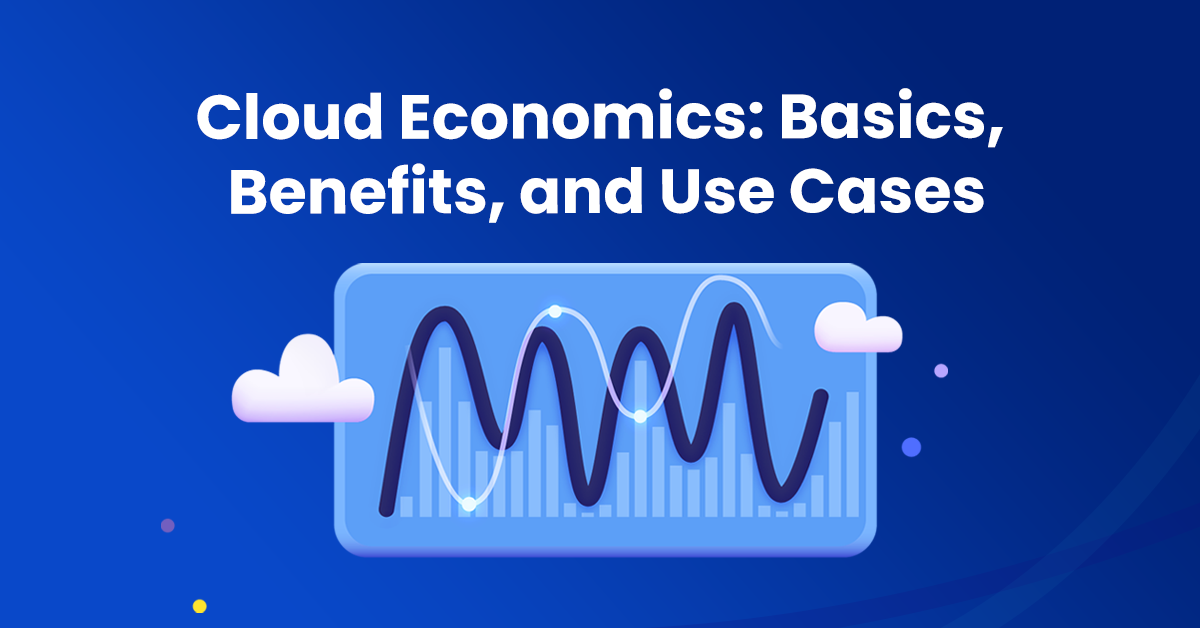The cloud has taken the tech world by storm in the past few years. It has become an essential tool for businesses, providing an easy way to store data, access applications, and manage networks. But as companies rely more and more on the cloud, they have to be mindful of their cloud economics.
Cloud economics is a concept that has been gaining ground in recent years as businesses and organizations move away from traditional on-premise data centers and move their data and computing resources to the cloud. It is a critical aspect of cloud computing and its adoption as it helps determine cloud solutions’ cost-effectiveness and scalability. In this blog, we will explore the basics of cloud economics, the benefits, and the use cases in which it is employed.
What is Cloud Economics?
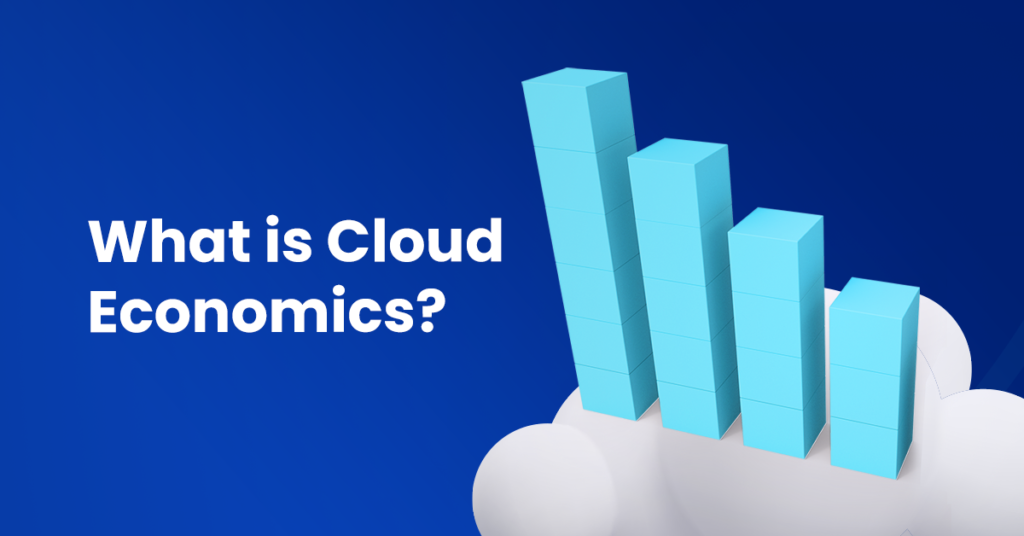
Cloud economics is the study of the economic and cost benefits of cloud computing. It examines the business and technology aspects of cloud computing services, such as Infrastructure as a Service (IaaS), Platform as a Service (PaaS), and Software as a Service (SaaS).
It also looks at the financial implications of cloud computing, including the cost-effectiveness of cloud-based services, the cost savings associated with cloud computing, and the potential for scalability and flexibility. Finally, it requires comprehending the cloud’s total cost of ownership (TCO), its advantages over on-premises models, and cost-saving techniques to maximize the return on your cloud investment.
What Are The Benefits Of Cloud Economics?
The benefits of cloud economics are numerous. Here are some of the critical benefits to elaborate:
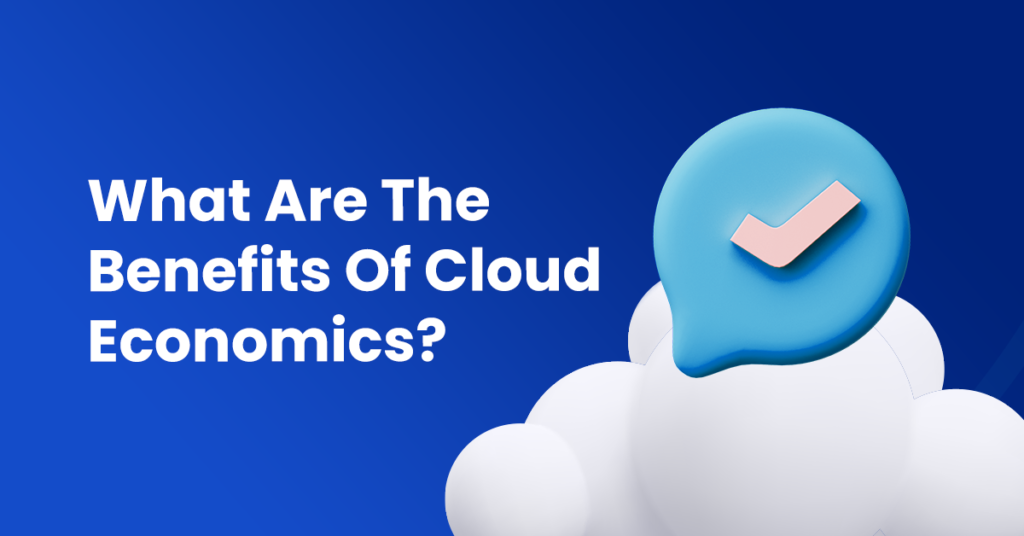
- Cost Savings: Cloud economics makes it possible to reduce costs through more efficient resource utilization and economies of scale. Cloud services can be scaled up or down as needed, and users only pay for what they use. This helps organizations optimize their infrastructure expenses and trim IT budgets.
- Increased Efficiency: Cloud economics enables businesses to save time and money by eliminating the need for manual tasks associated with traditional Infrastructure. Automation and virtualization can reduce manual processes, resulting in increased efficiency.
- Flexibility: Cloud economics makes it possible to quickly scale up or down based on the changing needs of the business. This can help organizations remain agile and responsive and better meet customer demands.
What Are the Use Cases and Key Considerations Of Cloud Economics?
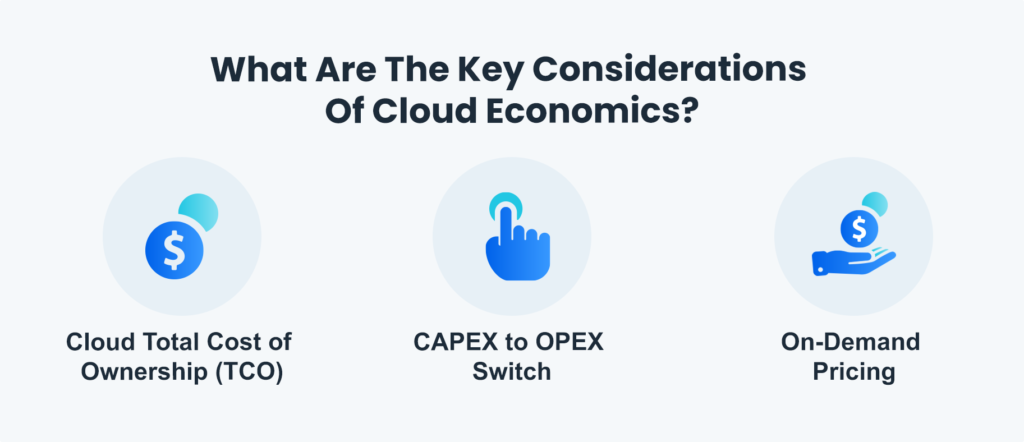
- Cloud Total Cost of Ownership (TCO):
Cloud TCO measures the total financial cost of a cloud computing solution, including the initial capital expenditure (CAPEX) and the ongoing operational expenditure (OPEX). In addition, it considers both the direct and indirect costs associated with deploying and running a cloud solution. This includes hardware, software, licenses, maintenance, bandwidth, storage, and other related costs.
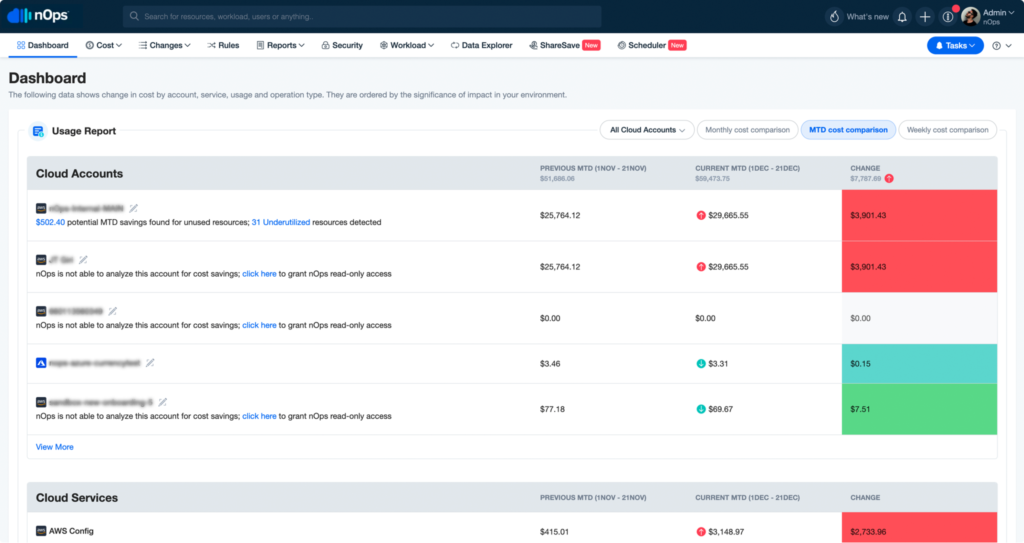
Cloud Monitoring Tools like nOps can provide powerful flexibility for cost tracking, plus handy summary reports like the “high-five” resources by cost within your workload. In addition, you can easily view & track infrastructure costs by project, account, cloud service, resource, and employee. Thus, it is easier to understand per-unit cost analysis and make better decisions.
- CAPEX to OPEX Switch:
The CAPEX to OPEX switch is a common strategy for moving from on-premises services to cloud computing. It involves shifting from a CAPEX model, where upfront capital expenditure is required to purchase hardware and software, to an OPEX model, where operational expenditure is incurred for the ongoing usage of the cloud. This switch can help reduce the upfront cost of cloud adoption and allow organizations to benefit from the scalability and agility of cloud services.
- On-Demand Pricing:
On-demand pricing is a pricing model in which customers pay only for the resources and services they use. This model is popular in cloud computing, where costs depend on the amount and type of usage. With on-demand pricing, customers can scale their usage up or down as needed, allowing them to adjust their costs to match their needs quickly. Thus, your costs become elastic. This implies that they could soon become out of hand if you don’t frequently monitor your cloud costs and make data-driven decisions.
Thus, nOps ShareSave ensures you are up to date with every change incorporated. You can easily manage cloud costs and save more money by consolidating cloud accounts into a single pricing model and offering ongoing visibility to change requests. In addition, it paves the path for the best root cause analysis skills accessible anywhere by helping you understand all the what, why, when, and how. This translates to better management and supervision of your cloud spending.
How nOps – Cloud Reporting Tool Can Help With Cloud Economics?
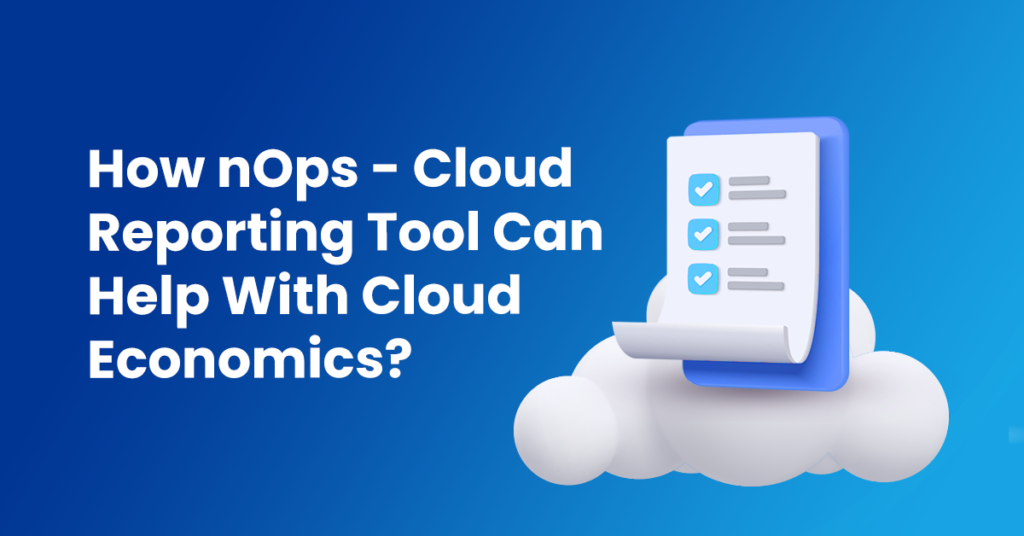
- nOps tools like the Cost Optimization Tool and ShareSave Scheduler can help businesses better manage their cloud economics. nOps is a cloud infrastructure monitoring and cost optimization platform that helps businesses optimize their cloud resources and reduce costs. With nOps, businesses can track their cloud spending, monitor cloud performance, and identify potential cost savings opportunities.
- nOps provides businesses with detailed performance metrics, allowing them to pinpoint areas where they are overspending or underutilizing resources. This helps businesses optimize their cloud resources and minimize costs. For example, nOps can help businesses identify unused resources, such as storage and database instances, that can be decommissioned to reduce costs.
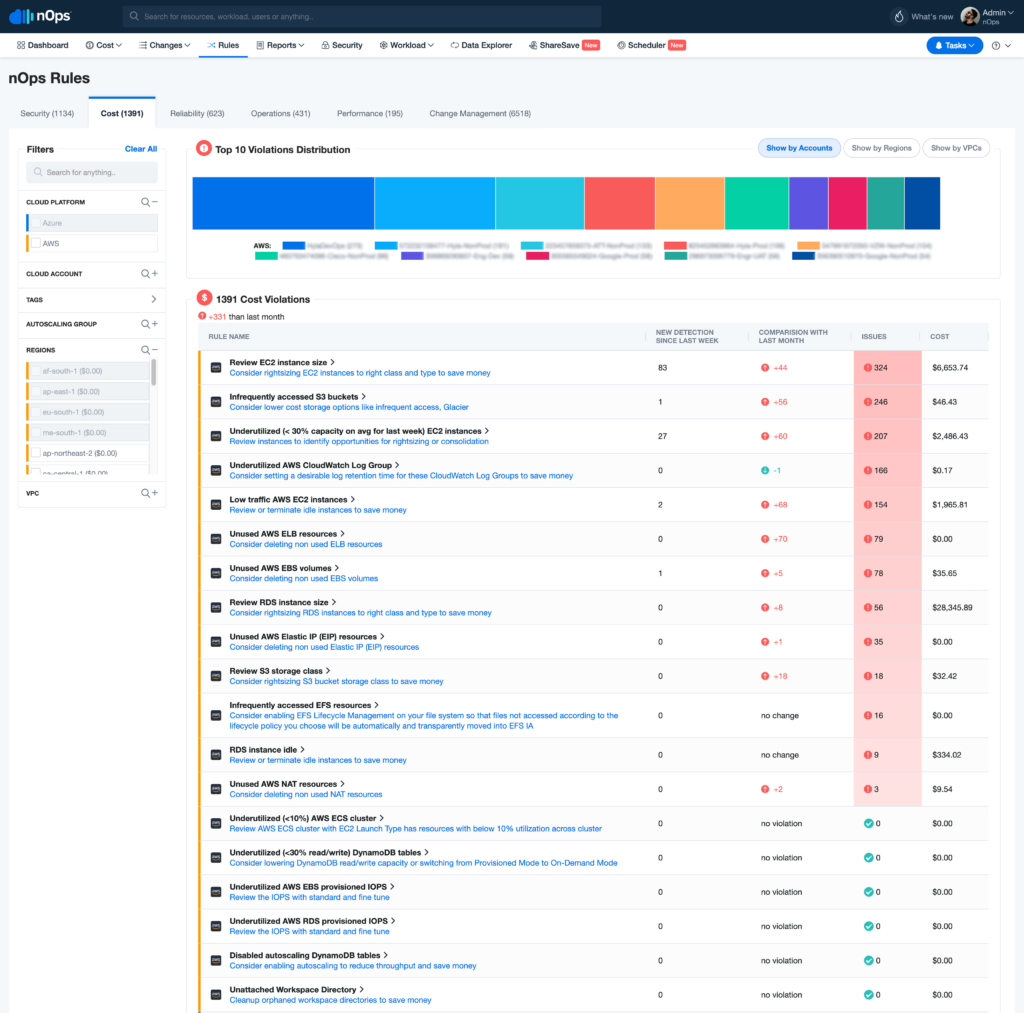
- nOps also helps businesses identify cost-saving opportunities. By tracking usage patterns and resource utilization, nOps can identify areas where businesses can reduce costs without compromising performance. For example, nOps can help businesses identify when they are running more instances than necessary or when a certain resource can be scaled down to meet demand.
- In addition, nOps can help businesses identify and correct cloud misconfigurations. Cloud misconfigurations can lead to unexpected costs, such as increased data transfer fees or overprovisioned resources. nOps can help businesses identify and correct these misconfigurations, helping them reduce costs and improve performance.
Overall, nOps is a valuable tool for businesses looking to optimize their cloud economics via detailed performance metrics, identifying cost-saving opportunities, and helping manage cloud costs across multiple providers.

